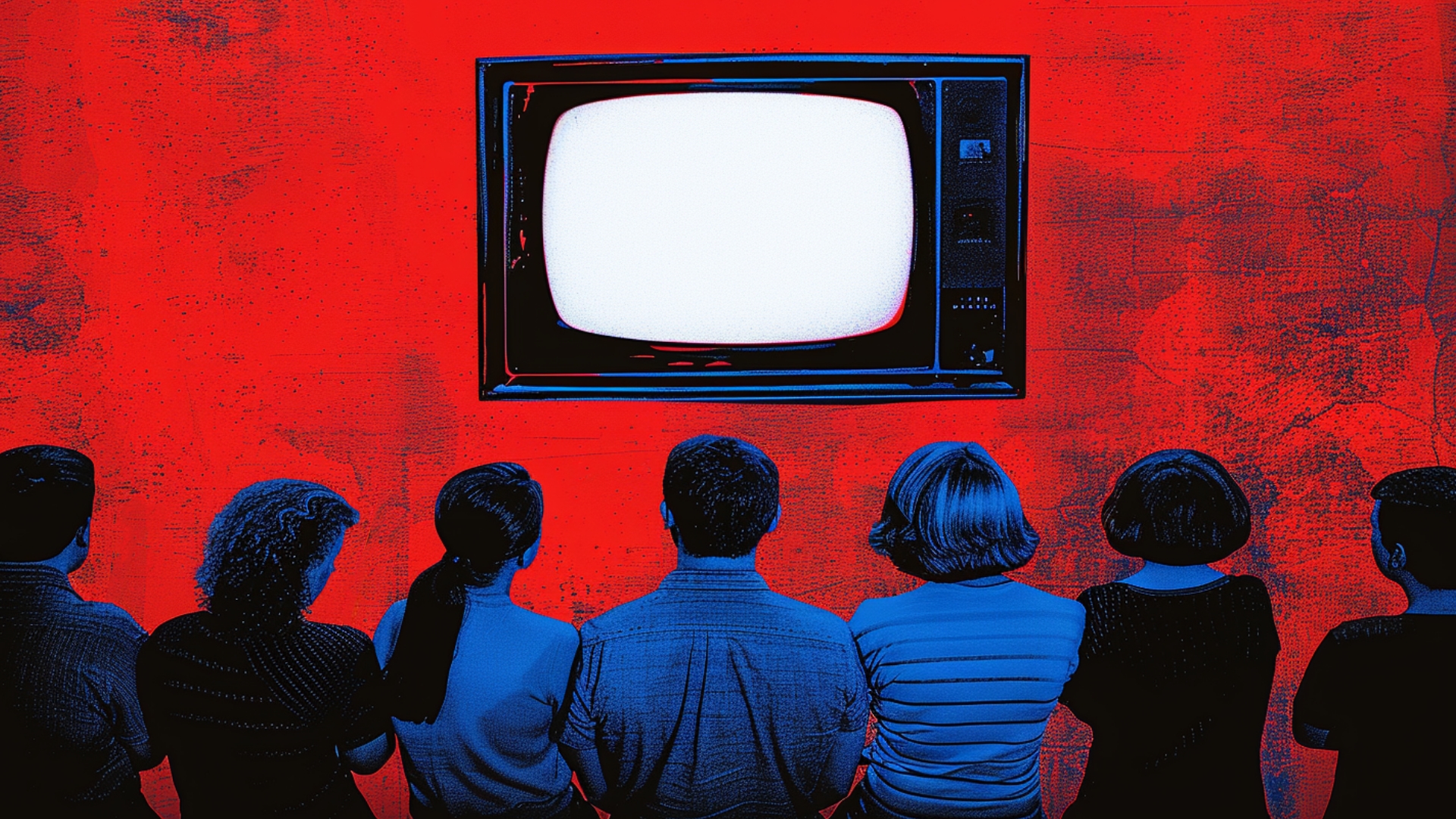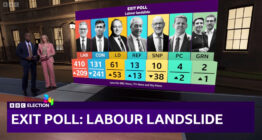How augmented reality and virtual production are changing election night

Subscribe to NCS for the latest news, project case studies and product announcements in broadcast technology, creative design and engineering delivered to your inbox.
As the 2024 election approaches, broadcasters are preparing to leverage augmented reality and virtual production technologies to enhance their coverage. These tools are changing how complex electoral data is presented, making it more engaging and (hopefully) understandable for viewers.
“With a record number, about 3.7 billion people are handing out ballots to vote in 70 countries in 2024. Therefore, channels have the opportunity to become the place to be on election nights, with immersive election coverage that brings the drama of democracy to life in exciting and impactful new ways,” said Ofir Benovici, CEO of Zero Density.
The 2024 UK General Election showcased the growing importance of mixed reality technologies in political reporting. Major broadcasters like BBC News, Sky News and ITV News integrated these tools to create immersive and informative coverage.
BBC News utilized an augmented version of 10 Downing Street in their studio, while Sky News transformed their space with extensive AR elements and virtual set extensions, including life-size models of party leaders and a virtual 10 Downing Street.
Integrating AR and virtual production offers broadcasters new methods for visualizing data, explaining complex scenarios and maintaining viewer engagement throughout extended coverage periods.
Real-time data and immersive presentations
One key advantage of these technologies is the ability to present real-time data in visually compelling ways.
“Recently, I’ve seen some exciting things happening with all types of election graphics and data. Things like bar or sliver charts updating in the lower third in real-time seem simple but can keep viewers engaged and feeling part of the story,” said Patrick Twomey, director of graphics product management at Ross Video.
This real-time updating capability allows broadcasters to maintain a sense of immediacy and excitement as results come in, potentially increasing viewer retention throughout the night.
AR and virtual production also enable more interactive and immersive presentations of electoral information.
“I recently saw a broadcaster using volumetric scans of political candidates during an analysis breakdown. Every time they brought up a key policy, the candidates who were for it would step forward, and those against it would step back, making for a clear way to communicate a candidate’s position; they were visibly taking a stance on it on the screen,” said Twomey.
“Elections are about displaying large amounts of complex data in a way that the audience can understand, while trying to build engagement with the viewers. Advanced virtual tools and AR help showing data-rich graphics in context, such as maps, tables, comparisons, and many more, so the anchors can enhance their storytelling by interacting with such graphics in real time,” said Miguel Churruca, marketing and communications director at Brainstorm, emphasizes the storytelling potential of these technologies.
This interaction between presenters and virtual graphics can make analysis more dynamic and more accessible, potentially improving viewer comprehension of complex electoral scenarios (like the Electoral College in the United States).
Technical challenges and considerations
While the potential of AR and virtual production in election coverage is significant, broadcasters face technical challenges in implementation.
“Implementing highly accurate camera tracking is imperative to any production that utilizes virtual graphics, and each use-case scenario presents its own unique challenges,” said Chris Izatt, director of innovation and virtual at AE Live.
Ensuring seamless integration of virtual elements with live footage requires precise synchronization and careful planning.
“Latency and genlock are both key challenges when implementing virtual production and AR elements within a broadcast environment. All elements of the production must tie together cleanly. If they don’t, then the illusion will be broken — the audience will be focused on perceived technical issues, rather than the production itself,” said Adam Callaway, global lead of virtual production and broadcast at Brompton Technology.
Broadcasters must invest in the necessary technology and expertise to overcome these hurdles and deliver a polished final product.
The possible role of AI and future technology
Looking ahead, artificial intelligence is set to play an increasing role in election coverage.
“Generative AI is definitely getting ready to make an impact in the broadcasting scene as it does in almost every industry by facilitating virtual set asset creation which is one of the areas that requires the highest cost. Generative AI will significantly decrease the investment necessary for virtual production, therefore making it more available for creative minds,” said Benovici.
This development could potentially democratize access to advanced visualization tools, allowing even smaller broadcasters to produce compelling coverage.
As broadcasters prepare for the 2024 election season, AR and virtual production technologies are poised to play a central role in coverage strategies. These tools offer new ways to present data, explain complex scenarios and maintain viewer engagement throughout extended broadcasts. While technical challenges remain, ongoing developments in AI and graphics technology suggest that election coverage will evolve, becoming more immersive, informative and engaging for viewers.
Beyond virtual, HTML 5 graphics and increasing viewers on non-traditional platforms like TikTok or Instagram will also impact presentation style and format.
“Elections are perfect examples of how journalists and designers combine their creativity and expertise to push the technology forward to provide the audiences with a show that, in essence, is about displaying data for several hours, which is always a challenge,” said Churruca.
As the 2024 elections approach, viewers can expect to see increasingly sophisticated and engaging coverage powered by the latest in AR and virtual production.
Subscribe to NCS for the latest news, project case studies and product announcements in broadcast technology, creative design and engineering delivered to your inbox.







tags
Adam Callaway, AE Live, AI, Artificial Intelligence, Augmented Reality, Augmented Reality for Broadcast, Brainstorm 3D, Brainstorm Multimedia, Brompton Technology, Chris Izatt, Miguel Churruca, Mixed Reality, Ofir Benovici, Patrick Twomey, Ross Video, Virtual Production, Zero Density
categories
Augmented Reality, Virtual Production and Virtual Sets, Elections, Heroes, Virtual Sets